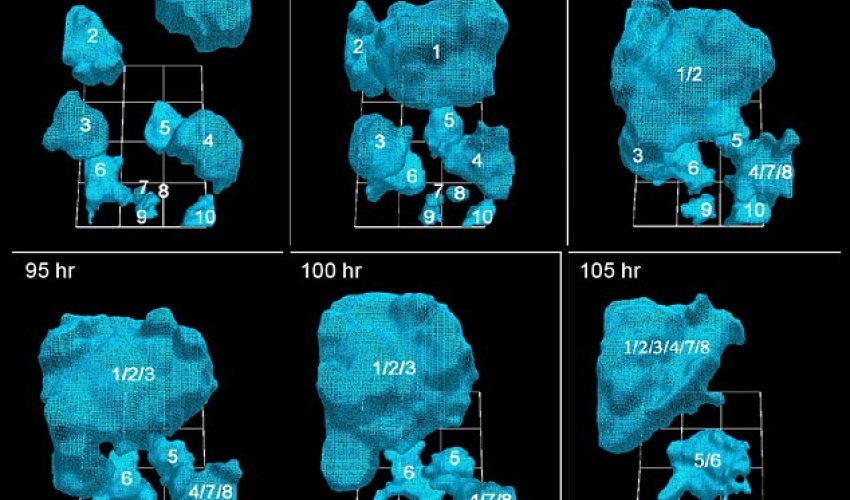How a cancer tumor grows

The rapid way in which cancer cells form a tumor has been captured in a new video.
The 3D footage shows how cancerous breast tissue cells pull in healthy cells which then form into a tumour.
It's believed to be the first time cancer cells' motion and transformation into tumours has been continuously tracked.
The University of Iowa discovered that cancerous cells recruit cells into tumors by extending a type of cable structure to grab their neighbors - both cancerous and healthy - and reel them in.
The researchers believe that as little as five per cent of cancerous cells are needed to form the tumours.
'It's not like things sticking to each other,' said David Soll, biology professor at the UI and corresponding author on the paper, published in the American Journal of Cancer Research.
'It's that these cells go out and actively recruit. It's complicated stuff, and it's not passive.
'No one had a clue that there were specialised cells in this process, and that it's a small number that pulls all the rest in.'
The findings could lead to a more precise identification of something known as 'tumorigenic cells', which are those cells that form into tumours.
Scientists hope it will also lead to more accurate testing of which antibodies that can eliminate them.
In a paper published last spring in the journal PLOS One, Soll's Monoclonal Antibody Research Institute team showed that only cancerous cells engaged in tumor formation.
Like evil-minded envoys, individual cancer cells extend themselves outward from the original cluster, probing for other cells in the area.
Once it detects one, the extended cell latches on and pulls it in, forming a larger mass.
The activity continues, the cancerous extensions drawing in more and more cells—including healthy cells—as the tumor enlarges.
'There's nothing but tumorigenic cells in the bridge (between cells),' Soll said, 'and that's the discovery.
'The tumorigenic cells know what they're doing. They make tumors.'
The question is how these cells know what to do.
Soll suggests they're reaching back to a primitive past, when these cells were programmed to form embryos.
If true, perhaps the cancerous cells—masquerading as embryo-forming cells—recruit other cells to make tissue that then forms the layered, self-sustaining architecture needed for a tumor to form.
Soll likens it to how bacteria can conspire to create an impenetrable film on surfaces of orthopedic implants to catheters.
'There must be a reason,' Soll said. 'You might want one big tumor capable of producing the tissue it needs to form a micro-environment.
'It's as if it's building its own defenses against the body's efforts to defeat them.'
(http://www.dailymail.co.uk/sciencetech/article-3427046/How-cancer-forms-Scientists-capture-terrifying-3D-footage-cells-transforming-tumour-time.html?ito=social-facebook)
www.ann.az
Latest news 
More news 



































 Photo
Photo 



 Video
Video 

